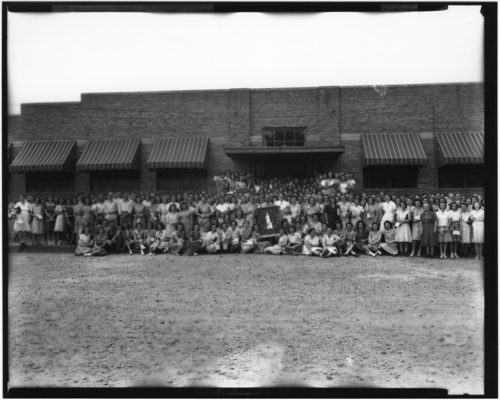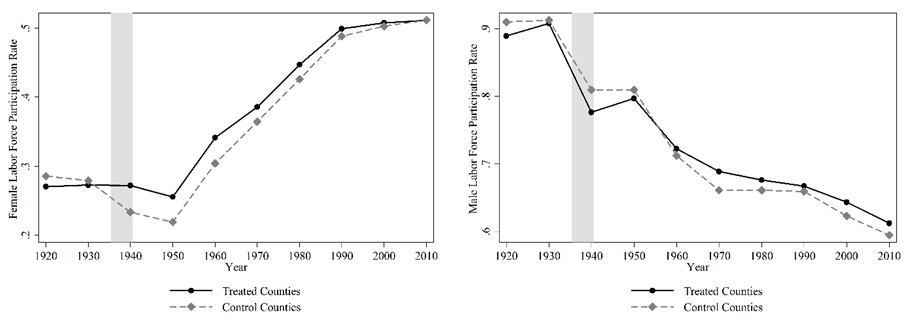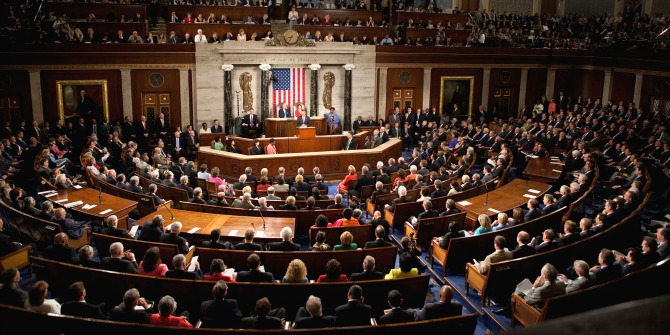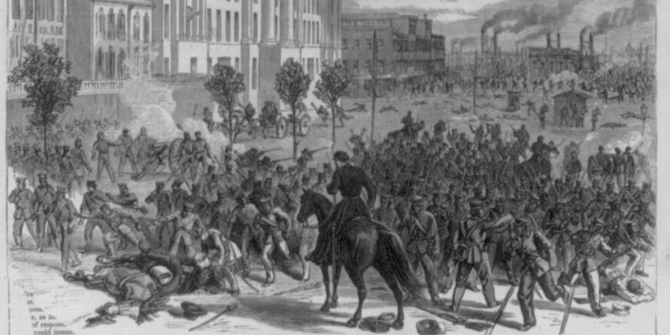 Government efforts to attract businesses using tax incentives and other subsidies are nothing new in the United States. Matthew Freedman writes about Mississippi’s “Balance Agriculture with Industry” Program, which endeavored to attract manufacturing operations to the state using taxpayer dollars in the 1930s. Mississippi’s program shares features with many modern-day economic development initiatives, though its short- and long-run impacts on local economies may be most relevant today for developing countries that have more recently embarked on efforts to diversify and modernize rural areas.
Government efforts to attract businesses using tax incentives and other subsidies are nothing new in the United States. Matthew Freedman writes about Mississippi’s “Balance Agriculture with Industry” Program, which endeavored to attract manufacturing operations to the state using taxpayer dollars in the 1930s. Mississippi’s program shares features with many modern-day economic development initiatives, though its short- and long-run impacts on local economies may be most relevant today for developing countries that have more recently embarked on efforts to diversify and modernize rural areas.
The bidding war that recently erupted among North American cities to lure Amazon’s second headquarters continues a long tradition of governments competing over jobs using tax and other incentives. Indeed, public officials in the United States have long tried to encourage local economic development through a variety of place- and project-based interventions. Research on such efforts has generally focused on policies instituted within the past few decades. However, the history of such initiatives in the United States stretches back much further. America’s early forays in using industrial policy to attract businesses to particular regions in the 1930s offers a window into the genesis of our current development policy landscape and provides some perspective on these policies’ potential long-run impacts on communities.
Motivated by a desire to bolster its flagging economy, the state of Mississippi embarked upon an unprecedented effort in the late 1930s to attract manufacturing interests to its historically agricultural communities. Passed in 1936, Mississippi’s Balance Agriculture with Industry (BAWI) Program allowed cities and counties to use money raised through publicly issued bonds to purchase land, build manufacturing facilities, and rent those facilities out at low cost to private companies. The BAWI Program was the first systematic state-sponsored program aimed explicitly at attracting businesses using government subsidies; in subsequent years it provided a model for other states hoping to diversify and strengthen their economies. It also set the stage for increasingly intense inter-state competition over industry in the post-World War II period.
Enticed by the benefits offered under the BAWI Program, thirteen large manufacturing plants took root in Mississippi between 1936 and 1940. Despite efforts to attract firms that offered higher paying jobs and that would employ men, the plants that established operations in the state were predominantly in low-skilled textile industries and primarily hired women. Figure 1 is a photograph taken in 1942 of the employees of Crystal Springs Shirt Corporation, a BAWI plant staffed almost entirely by women that located in southwestern Mississippi.
Figure 1 – Employees of Crystal Springs Shirt Corporation, 1942

Notes: Archived at the Mississippi Department of Archives and History. Photographer: Luther M. Hamilton, Sr. Location: Crystal Springs, Copiah County, Mississippi.
My research examined how the arrival of BAWI plants impacted local economies both contemporaneously and over the long-run. I focused particularly on the BAWI plants’ effects on the labor market outcomes of women, who previously had few opportunities to work off home farms in affected areas.

To explore these impacts, I compiled nearly a century’s worth of Census data and tracked demographic and economic conditions in Mississippi counties that did and did not receive BAWI plants. The main results are summarized in Figure 2, which shows female and male labor force participation in the eleven “treated” counties that received the thirteen plants as well as in the seventy-one other “control” counties between 1920 and 2010. The shaded region corresponds to the four-year span during which the BAWI plants initially established operations.
Figure 2 – Female and Male Labor Force Participation Rates in Mississippi, 1920-2010

Notes: Derived from Decennial Census and American Community Survey data. The treated counties are the 11 Mississippi counties that received BAWI investment between 1936 and 1940. The control counties are the 71 Mississippi counties that did not receive BAWI investment.
As the figure shows, female labor force participation rates in counties that received BAWI plants rose slightly after the investment took place, whereas they fell sharply elsewhere in Mississippi. Relative to the average gap pre-BAWI, the gap in female labor force participation rates that opens up between treated and control counties in 1940 is five percentage points, corresponding to an 18 percent increase in participation rates. Even more notably, the gap persists decades into the future, narrowing very slowly and disappearing entirely only after 2000. This pattern is particularly notable given that the majority of original BAWI plants were no longer operating by the early 1960s. Meanwhile, male labor force participation rates in treated and control counties follow very similar trends both pre- and post-BAWI investments, consistent with most of the subsidized plants hiring primarily women.
There are several possible mechanisms behind the observed persistent impacts of the BAWI plants on labor force participation among women. One possibility is that the BAWI plants attracted other upstream and downstream companies or led to spinoffs that also employed many women. I found that this type of agglomeration effect can explain some, but not all of the persistent effects. Selective migration of women, meanwhile, appears to play little role in the initial or lingering impacts of the investment.
Another plausible explanation for the program’s persistent impacts on local labor markets, albeit one for which there is limited hard evidence, is that the employment opportunities afforded by BAWI plants influenced local attitudes about women and work, and that these attitudes were imprinted on subsequent generations. In other settings, researchers have found that such intergenerational transfers of norms and expectations regarding the acceptability and desirability of women’s employment have quantitatively important and long-lasting impacts on labor markets.
This research offers some perspective on the short- and long-run consequences of one of America’s earliest coordinated efforts to use industrial policy to strengthen local economies. Modern-day government efforts to lure jobs to specific cities or regions share many features of Mississippi’s early attempts. However, my results are arguably more relevant in the present for developing countries, whose governments have more recently adopted industrial policies aimed at diversifying and modernizing the economies of traditionally agricultural areas.
- This article is based on the paper, ‘Persistence in industrial policy impacts: Evidence from Depression-era Mississippi’, in the Journal of Urban Economics.
Featured image: Courtesy, Mississippi Department of Archives and History
Please read our comments policy before commenting.
Note: This article gives the views of the author, and not the position of USAPP – American Politics and Policy, nor of the London School of Economics.
Shortened URL for this post: http://bit.ly/2y3xTVB
_________________________________________
About the author
 Matthew Freedman – University of California, Irvine
Matthew Freedman – University of California, Irvine
Matthew Freedman is an Associate Professor in the Department of Economics at the University of California, Irvine. His primary research interests are in labor economics, public finance, and urban economics. His work has also addressed topics in environmental economics and the economics of crime. He received his Ph.D. in economics from the University of Maryland-College Park.






